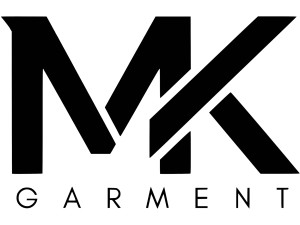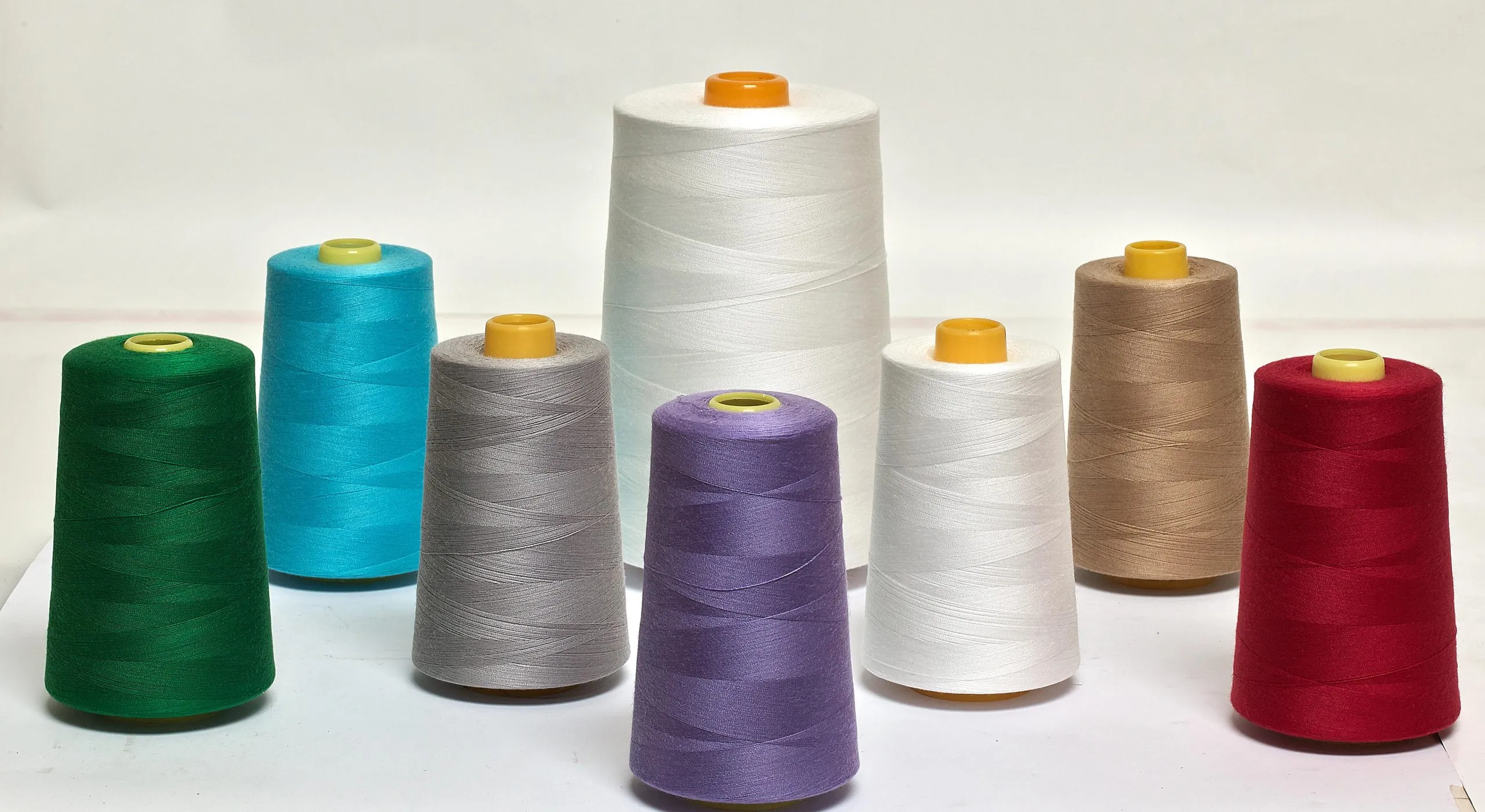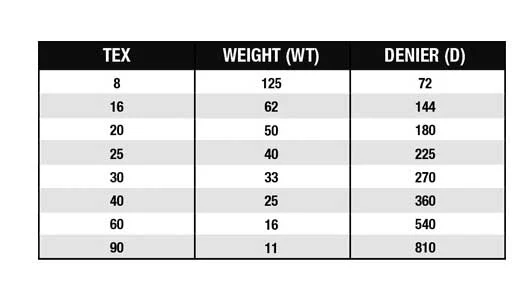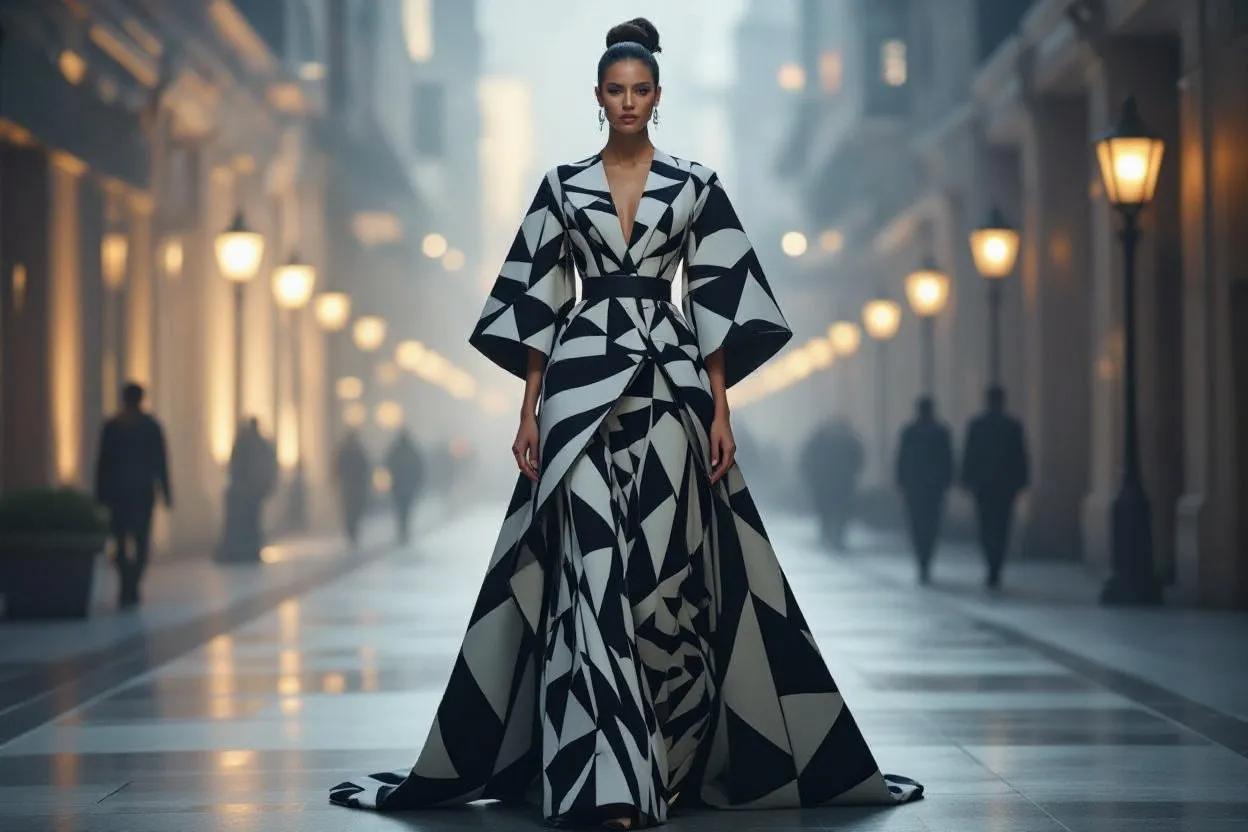
As you first look at an outfit, before noticing its color, fabric, or pattern, your eyes are naturally drawn to its shape. The shape, also known as the silhouette, is the overall outline of the clothing on the body. It defines how the garment sits, moves, and frames the wearer. Designers use shape to express mood, highlight features, and influence how the body is perceived, making it appear taller, slimmer, softer, or more structured. Understanding shape allows you to see fashion as more than just fabric, it becomes a form of visual storytelling and art.
What “Shape” Really Means?
Shape, or silhouette, is the foundation of fashion design. It’s the very first impression an outfit gives from a distance. Before anyone sees texture or details, they notice the outline, the shadow your outfit creates against the light. Each silhouette tells a story: confidence, softness, movement, or structure. Knowing the basic types of shapes helps you recognize what message your outfit sends and how it affects your body’s visual balance. The silhouette defines the outer contour of the garment.
Common shape families include:
- Natural Shape: Closely follows the body’s real form, used in tailored or fitted pieces.
- Bell or A-line Shape: Fitted at the top, flared at the bottom, seen in dresses and skirts.
- Tubular Shape: Straight from shoulder to hem, giving a minimalistic look.
- Hourglass Shape: Narrow at the waist with balanced shoulders and hips.
- Boxy Shape: Straight and structured, offering a relaxed or modern feel.
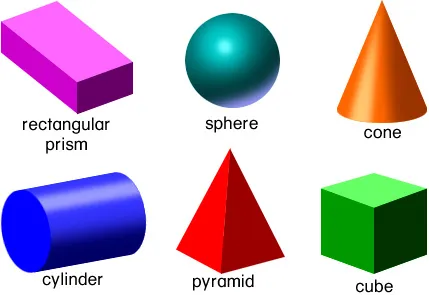
Each one interacts differently with the body, guiding how people see your proportions.
Definition of Silhouette:
Silhouette describes the garment’s outer contour, the shoulder line, waist placement, and hem length that you see from a distance. Pattern makers translate that contour into blocks and seams so the shape reads correctly on different bodies; you can compare an empire waist that lifts the torso to a peplum that adds hip volume, each creating distinct visual lines.

Importance of Shape in Design
Shape informs pattern cutting, fabric choice, and the level of internal structure you’ll need, so you can control fit and function. Structured silhouettes often require interfacing, linings, or boning, while flowing shapes depend on drape and fiber weight. You make deliberate shape choices to support mobility, durability, and the psychological message, authority, softness, or sportiness, that the brand intends to convey.
Consider Dior’s 1947 New Look as a design case: its sharply cinched waist and full skirt reshaped postwar silhouettes and consumer expectations. You can apply that lesson practically, raise a waistline to lengthen perceived legs, add vertical seams to slim the torso, or introduce a peplum to balance narrow hips—each tweak produces predictable visual shifts across sizes when executed with proper grading and fabric tests.
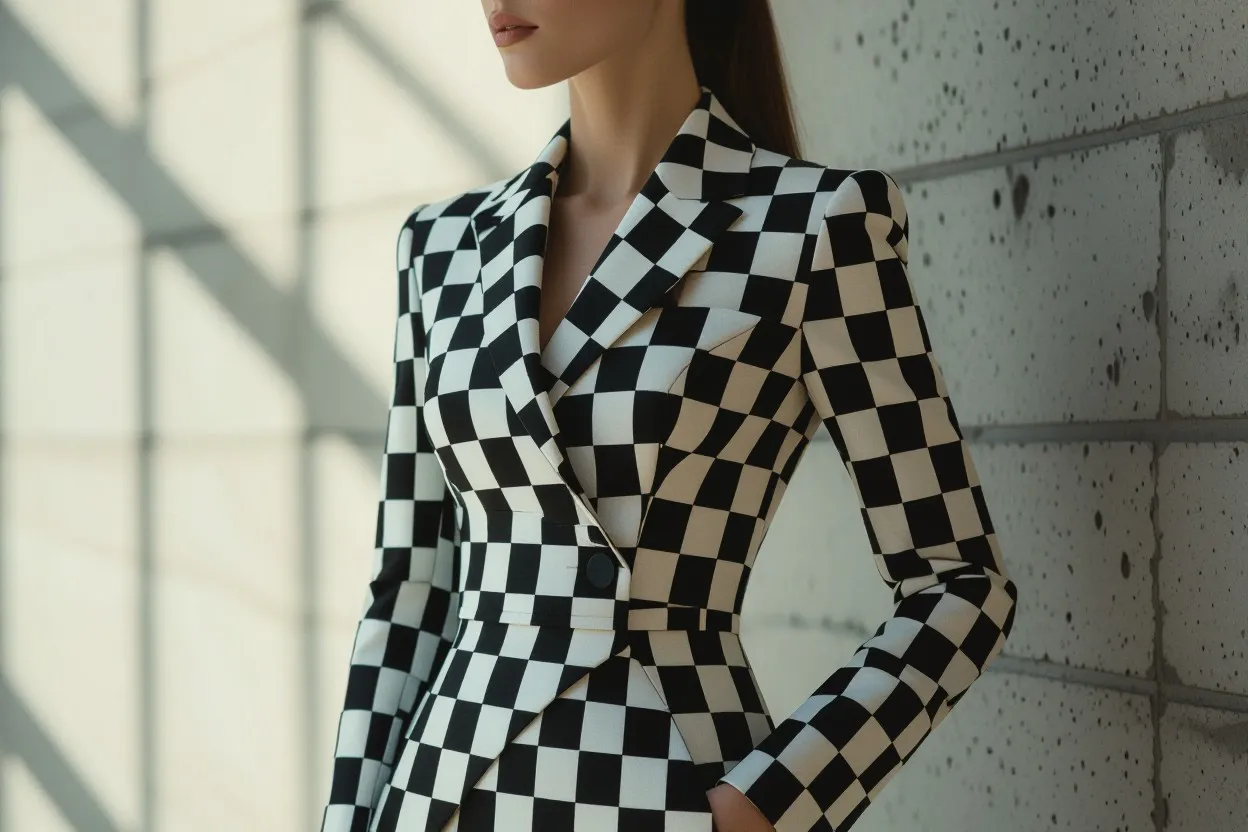
The Optical Illusion Basics
Fashion is full of visual tricks. Designers use shape the way painters use perspective, by guiding the eye and controlling what stands out. The human eye naturally follows lines and curves. By adjusting these lines, fashion can visually lengthen, shorten, widen, or slim the body without changing its real form. This is why some clothes feel instantly flattering, they use shape as a subtle optical illusion. Shape manipulates the way light and sight move over the body.
- Vertical shapes (like long coats, center seams, or vertical pleats) draw the eye up and down, making the body appear taller and leaner.
- Horizontal shapes (like wide belts or boat necks) move the eye sideways, creating width or balance.
- Diagonal shapes (like wrap dresses or angled hems) create movement and dynamism while slimming the frame.
- Rounded or voluminous shapes (like puff sleeves or ball gowns) add size and softness to specific areas.
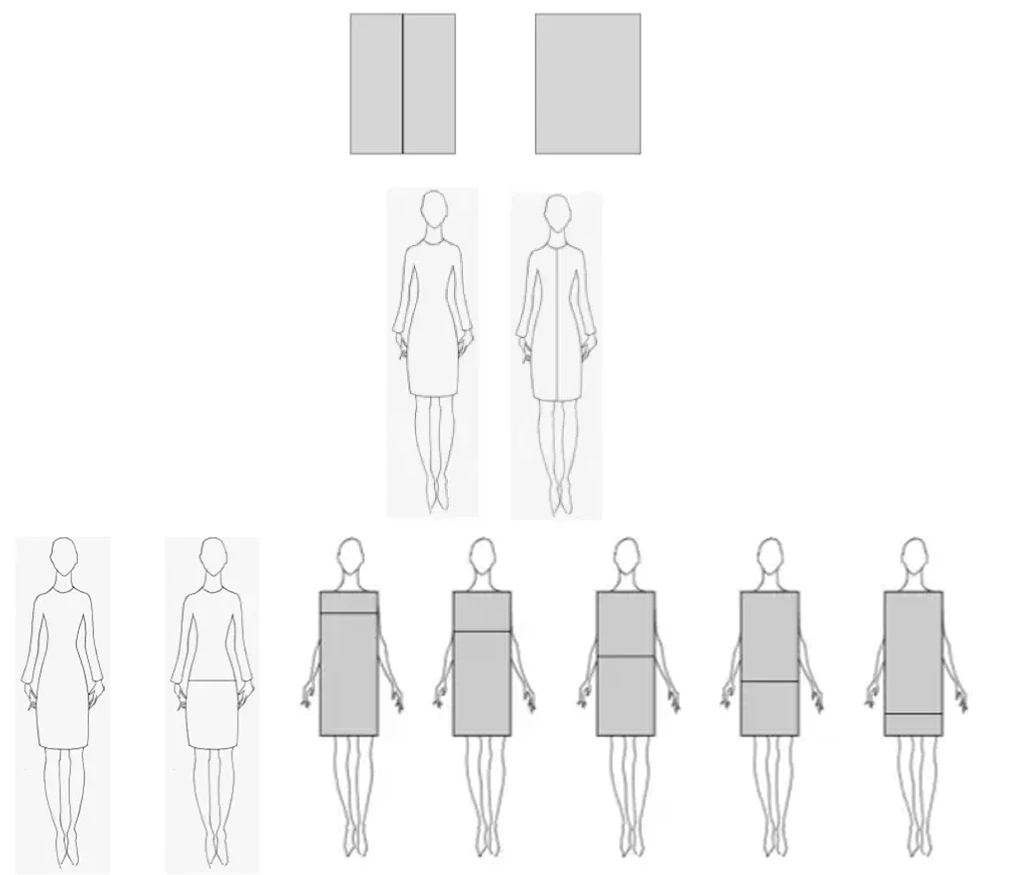
Wherever the garment adds volume, the eye perceives that area as larger. Wherever the garment removes volume or tapers, the body looks smaller.
How Classic Shapes Change What We See
Each classic fashion silhouette carries a built-in illusion effect. Even before you add color or pattern, the shape itself tells the eye where to look. These effects are consistent and universal—they work across sizes, genders, and styles. Understanding them helps you choose shapes that complement your figure and the mood you want to express.
- Natural (Fitted): Closely follows the body’s lines for a neat, polished look—common in blouses or pencil skirts.
- Bell / A-Line: Slim at the top, wide at the bottom; it minimizes the waist and balances the hips.
- Tubular: Straight from top to bottom; it creates a long, lean outline that softens curves.
- Hourglass: Cinched waist with balanced shoulders and hips; emphasizes proportion and curves.
- Boxy: Rectangular and structured; gives a modern or casual vibe, making shoulders appear broader.
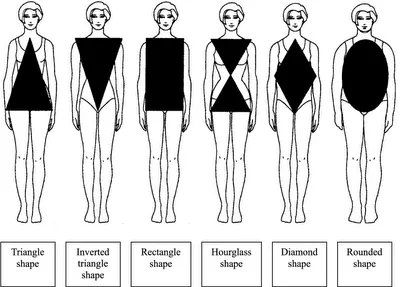
Garment Examples and Illusion Effects
It’s one thing to understand theory—it’s another to see it in real clothes. Everyday garments use shape to create specific visual effects that flatter or dramatize the wearer. The magic lies in how designers combine fabric, structure, and movement to form illusions that please the eye.
- A pencil skirt uses a narrow taper to elongate the legs and slim the hips.
- A ball gown with a wide skirt shrinks the waist visually and adds grandeur.
- A boxy T-shirt makes the body look easy and relaxed, softening the figure.
- A bodycon dress hugs curves for a bold, confident effect.
- A wrap dress adds diagonal flow that shapes the waist gently.
- Wide-leg trousers add vertical power and balance a strong shoulder line.
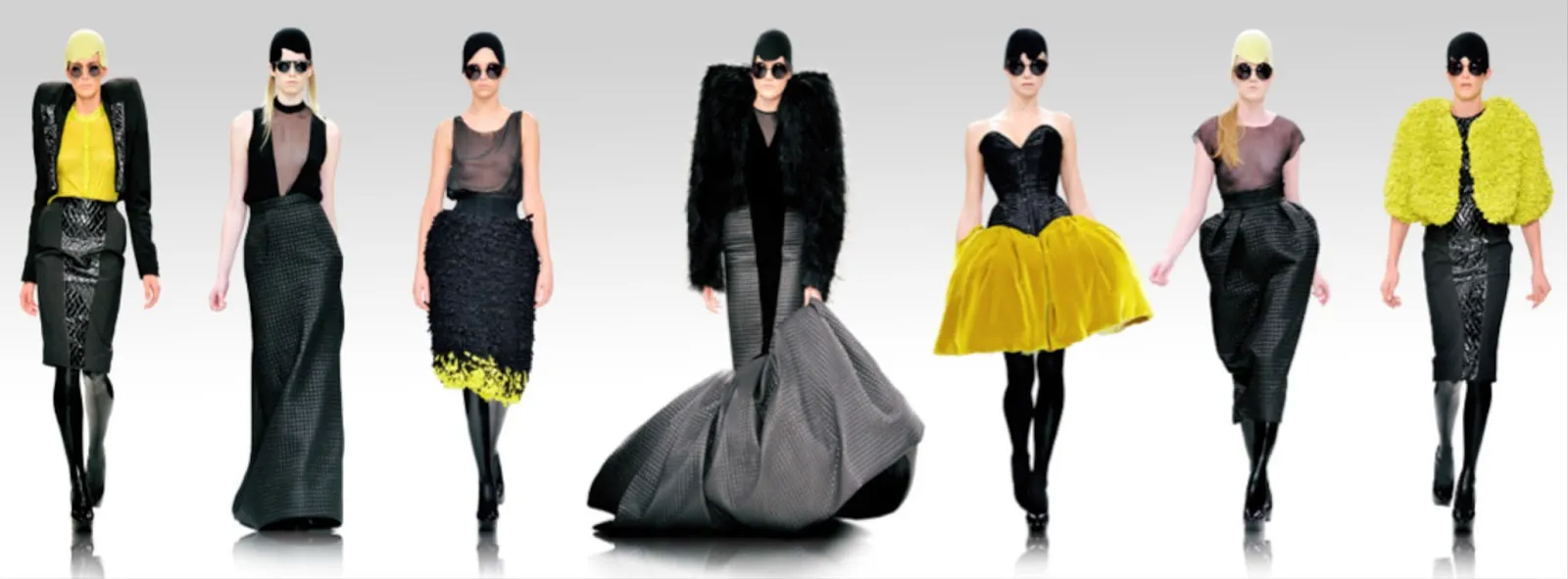
Every garment’s outline tells a visual story—about confidence, freedom, or softness.
The Role of Details in Shaping Illusions
Even small design choices—necklines, seams, hems, or sleeves—can transform the way your body looks. These details direct the eye subtly, creating lines that can stretch, shorten, or balance your frame. Understanding how details affect shape gives you more control over how clothes perform visually.
- Necklines: V-necks and deep lapels lengthen the neck and torso; boat or square necks broaden shoulders.
- Sleeves: Puff sleeves widen; slim or raglan sleeves narrow and soften.
- Waists: High waists elongate legs; dropped waists lengthen torsos.
- Hems and slits: Asymmetrical hems create movement; front slits add verticality.
- Seams: Princess seams form long vertical curves that shape and slim the figure.
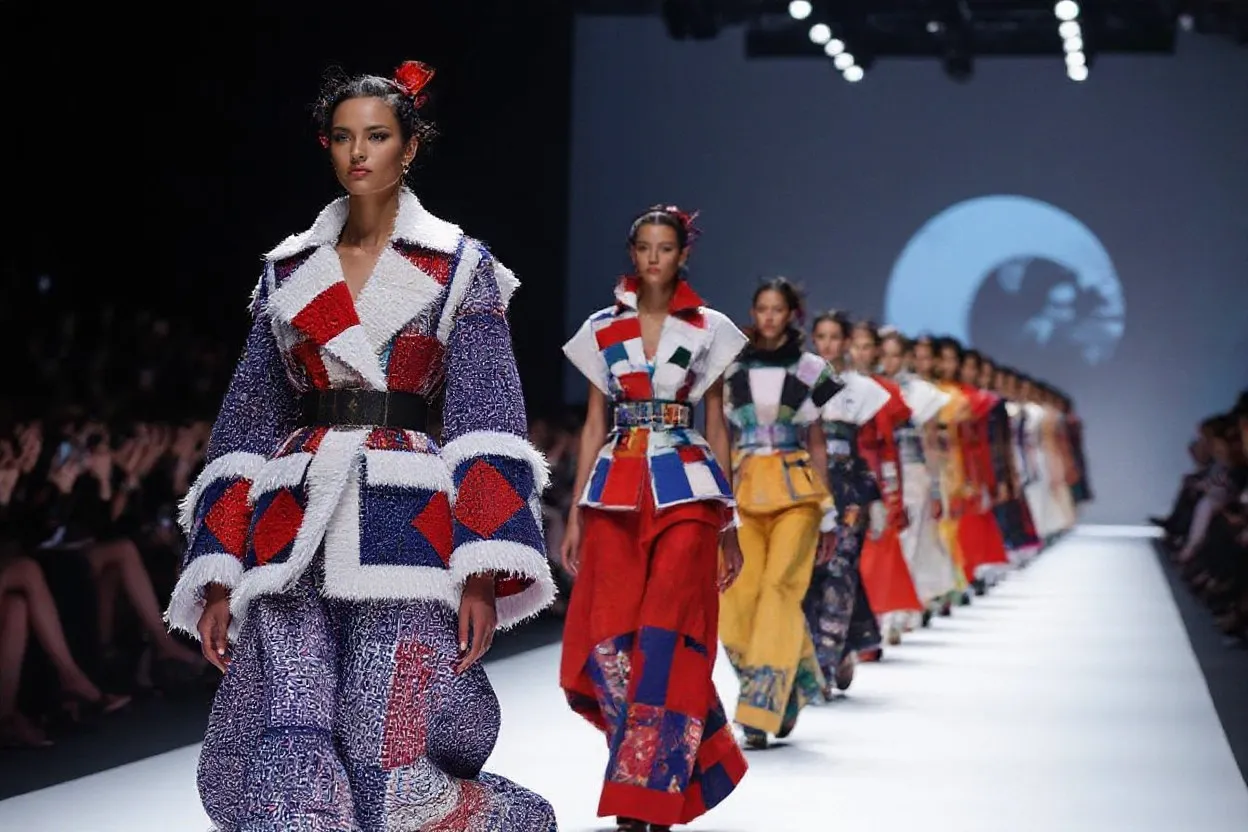
The smallest cut can make a major difference in how shape is perceived.
Fabric, Structure, and Movement
Shape doesn’t exist alone—it depends on fabric and construction. A garment’s material determines whether its shape holds firm or flows softly. Structure defines sharpness; drape defines motion. Designers carefully choose materials and inner supports to make sure the intended illusion remains visible as the wearer moves.
- Stiff fabrics (like denim or taffeta) hold their shape, creating crisp edges.
- Fluid fabrics (like silk or jersey) move with the body, producing soft silhouettes.
- Stretch materials hug curves and highlight the body.
- Padding and interfacing add structure at shoulders or collars, creating sharp lines.
- Pleats, gathers, and tucks control where the garment expands or contracts.
Final Thoughts / Conclusion: The Art of Visual Balance
Shape is the quiet artist behind every outfit. It controls balance, harmony, and focus. Whether sleek or dramatic, fitted or flowing, the silhouette determines how the world sees you before you say a word. When you understand shape, you can choose clothes not just to wear, but to communicate. Shape creates optical illusions that can flatter the body, highlight personality, and set the tone of any look. Through thoughtful use of line, structure, and proportion, designers at Mekong Garment craft silhouettes that combine function with beauty. Remember: shape is more than an outline, it’s the language of style, confidence, and visual storytelling.
